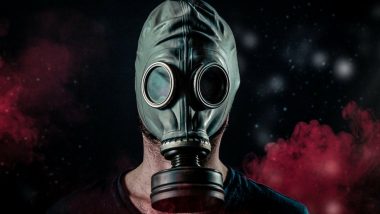Recently in Salisbury England, a former Russian Spy, 66-year-old Sergei Skripal and his 33-year-old daughter Yulia became victims of a rare nerve gas attack and were found slumped on a public bench in a catatonic state. This has triggered a public health warning in Salisbury, with government officials urging residents who used the same diner as the father-daughter duo to wash their possessions, to prevent getting poisoned by traces of the nerve gas.
What’s a Nerve Gas?
Nerve gas or nerve agents are highly toxic chemicals belonging to the group organophosphates. They tend to have a direct impact on the nervous system (hence the name) and can break down the communication between the brain and the nerve, disrupting important bodily functions. They are liquid at room temperature and produce a vapour that is inhaled by victims.
It was originally intended to be used in insecticides. But its high level of toxicity makes it ideal for military use. Nerve agents are known to be one of the deadliest warfare weapons since they are cheap, easy to produce (even by developing nations) and ensure mass-scale casualties.
They have been used many times in the past by governments and radicals alike; the latter leverages its psychological impact on the society, making it an ideal weapon for terrorists. Previously, it claimed lives of 90,000 victims during World War I and injured 1,30,000 others. Terrorists of the Aum Shinrikyo sect was also known for unleashing nerve gas attack in a Tokyo subway in 1995. More recently, it was used by the Bashar al-Assad-led military against the people of Syria’s Idlib province.
How they work
Nerve gases are deadly chemicals that immediately start harming the person exposed to them. Exposure happens through inhalation in the gaseous form and through the eyes and skin in the liquid form. As explained before, the gas breaks down the transfer of messages between the nerves by inhibiting an important neurotransmitter. Highly toxic, nerve agents are fast-acting toxins that immediately affects the exposed person, causing violent muscle spasms.
Types of nerve agents
Nerve gas or nerve agents is a broad category. Agents like Sarin, Tabun, Soman, VX and Cyclosarin are all nerve agents, which work by impairing the neural functioning.
Symptoms of nerve gas poisoning
Nerve gas acts almost immediately. If treatment is not given immediately, the victim can die in as less as 10 minutes, but not before making the person suffer grievously. Here are the five devastating effects of nerve gas poisoning.
1 Mouth fills up with frothy saliva
The person exposed to nerve gas causes the mucous membranes to produce excessive fluids, causing your eyes to tear up, nose to water and mouth to froth with saliva. Chemicals like sarin gas cause the characteristic ‘foaming’ at the mouth.
2 Pupils shrink to a pinpoint
When the pupils shrink, the victim’s eyes stops responding to light and he or she goes blind. That’s because the gas directly impacts the neurotransmitters. There have been cases where high doses of the gas have blinded the person for life.
3 Lungs stop supporting breathing
Since the gas causes a complete breakdown of communication between the lungs and the nerves, it causes the muscles to stop responding to the signals sent by the nerves to the brain. The lungs then tense up and stop breathing. The airways also get clogged with mucus from the nose and the mouth, interfering with the breathing function.
4 Paralysis or catatonia
The Russian agent and his daughter were found to be in a catatonic state, meaning they were unable to move. This is caused by the complete breakdown of the communication system between the nerves and the brain. Victims lose control over their body and rendered immobile.
5 Vomiting and diarrhoea
Nerve gas tends to affect the stomach, leading to nausea and vomiting. The excessive build-up of mucus also causes the stomach to expel some of it from the digestive system. In an attempt to clear the body of the toxic substance, it will start voiding the bladder and the colon, causing an uncontrolled bout of diarrhoea.
The worst thing about nerve gas is that it is colourless and odourless. This makes it a deadly weapon since the victim won’t suspect a nerve gas attack or do anything to shield themselves from it.
(The above story first appeared on LatestLY on Mar 12, 2018 12:16 PM IST. For more news and updates on politics, world, sports, entertainment and lifestyle, log on to our website latestly.com).













 Quickly
Quickly





















